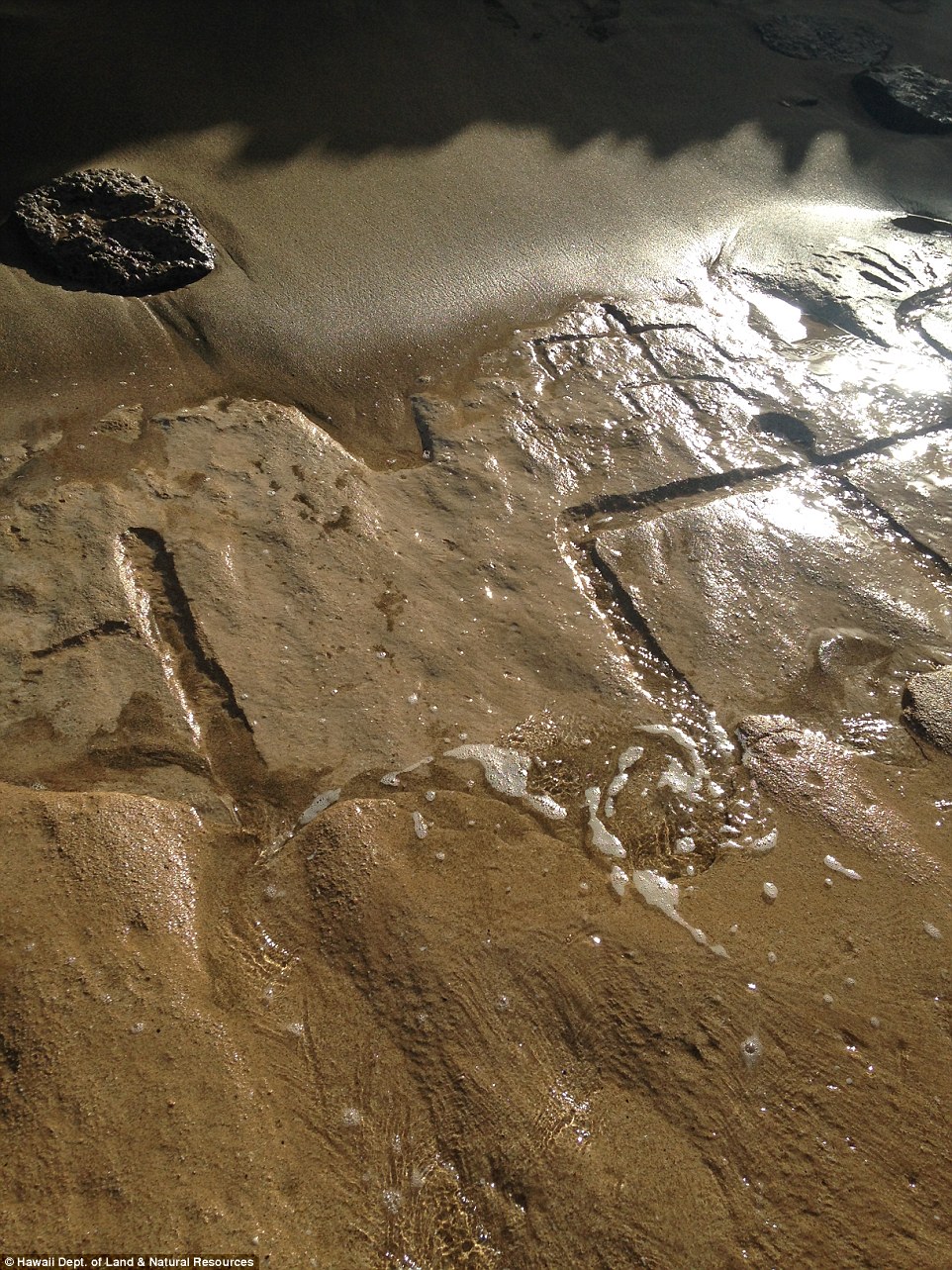
Centuries-Old Petroglyphs Revealed by Shifting Hawaiian Tides

On the Western shores of Oʻahu, natural wave activity revealed an approximately 115-foot-long stretch containing 26 petroglyphs this month for the first time since they were discovered in 2016.
The early Hawaiian carvings resembling stick figures extend into the property of the Pililaau Army Recreation Center in Waianae. Because the petroglyphs were discovered on army property, a spokesperson for the United States Army Garrison of Hawaii told Hyperallergic that its team of archaeologists is responsible for stewarding the artifacts, though the site is thought to carry sacred and religious significance for Native Hawaiians.
The petroglyphs were carved into beach stone, according to a report shared with Hyperallergic, though the specific dates of their creation are unknown. Attempts have been made to carbon date the carvings, but they have been unsuccessful, the military said. In a press release from when the petroglyphs were first spotted, the Hawaii Department of Land and Natural Resources estimated that the panels are more than 400 years old.
Of the 26 figures, 18 are thought to depict humans, and eight depict male genitalia. Only two of the humanoid drawings have fingers. The remaining exposed petroglyphs are geometric or abstract in nature.
Interviews conducted by the military to document oral histories in the surrounding area suggest that the petroglyphs have religious significance. According to Native Hawaiian cultural practitioner Glen Kina, who is consulting with the Army to protect the petroglyphs, the largest image may depict the demigod Maui with his fingers pointed to the East and West, as in a moʻolelo (a Native Hawaiian story or legend) in which he steals the sun. The area surrounding the Pōkaʻī bay, where the artifacts were discovered, is significant to sustenance ceremonies related to procuring fish.
It is likely that more petroglyphs exist and have yet to be uncovered near the exposed stretch. Soon, however, the etchings will be covered in sediment again as a result of littoral shifts, or the movement of sand caused by currents and wave activity.
Kina told the Associated Press this month that the recent uncovering of the petroglyphs is a warning. “It’s telling the community that the ocean is rising,” Kila said.